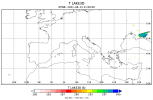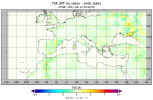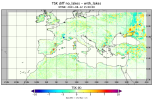francescomaicu
Member
Dear all,
I was reading this post and wanted to join the discussion, but the thread is disables.
I am running WRF on a large domain and I have some enclosed basins (such as the Black Sea and the Azov Sea) that are considered lakes in the nectcfd of the domain.
I have to simulate the development of a cyclone over that areas.
I am wondering about the SST update.
I am running with sst_update = 1 and prescribing an evolving SST covering that areas. I am NOT running with sf_lake_physics=1.
My question is whether the SST update is effective even though the lake mask = 1 over that areas. I guess so reading the manual, but I am not sure, and I do not know how to check that in the results.
If I run with sf_lake_physics=1 the skin_T (not sure exactly which variable is prognosed) is updated with the lake module if all the necessary data are found.
Thank you for any help.
I was reading this post and wanted to join the discussion, but the thread is disables.
I am running WRF on a large domain and I have some enclosed basins (such as the Black Sea and the Azov Sea) that are considered lakes in the nectcfd of the domain.
I have to simulate the development of a cyclone over that areas.
I am wondering about the SST update.
I am running with sst_update = 1 and prescribing an evolving SST covering that areas. I am NOT running with sf_lake_physics=1.
My question is whether the SST update is effective even though the lake mask = 1 over that areas. I guess so reading the manual, but I am not sure, and I do not know how to check that in the results.
If I run with sf_lake_physics=1 the skin_T (not sure exactly which variable is prognosed) is updated with the lake module if all the necessary data are found.
Thank you for any help.



